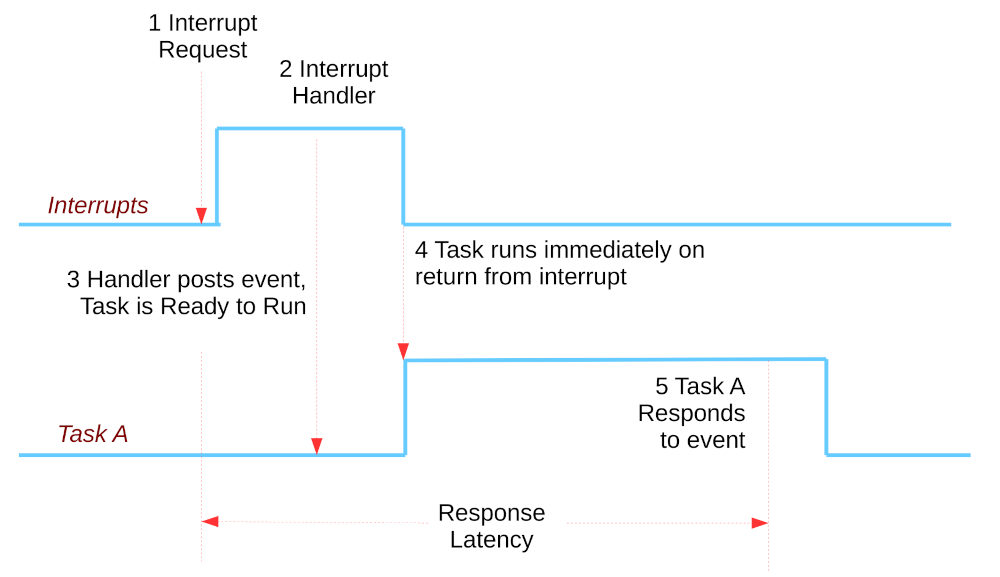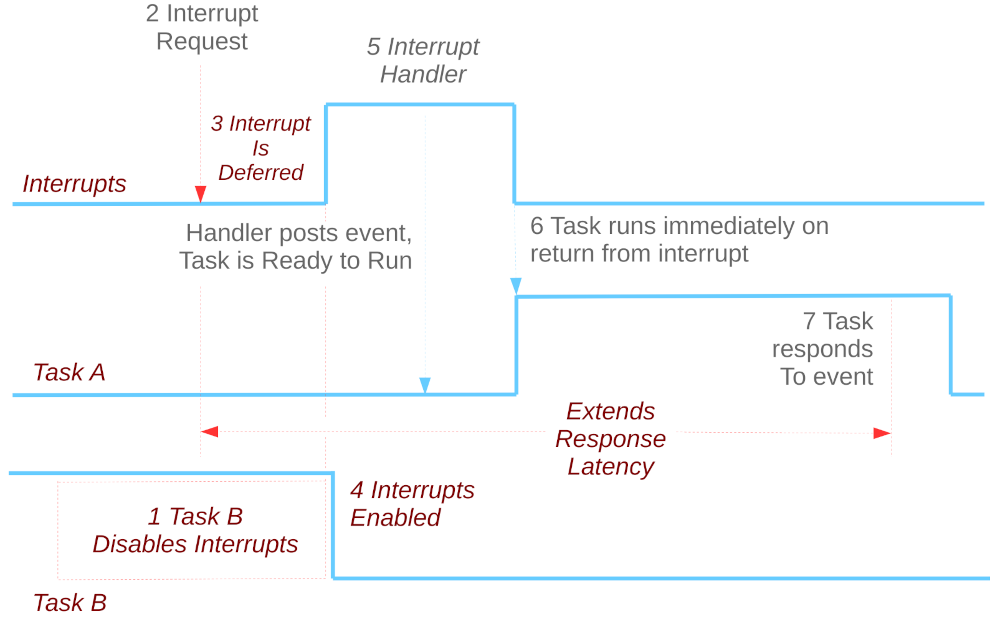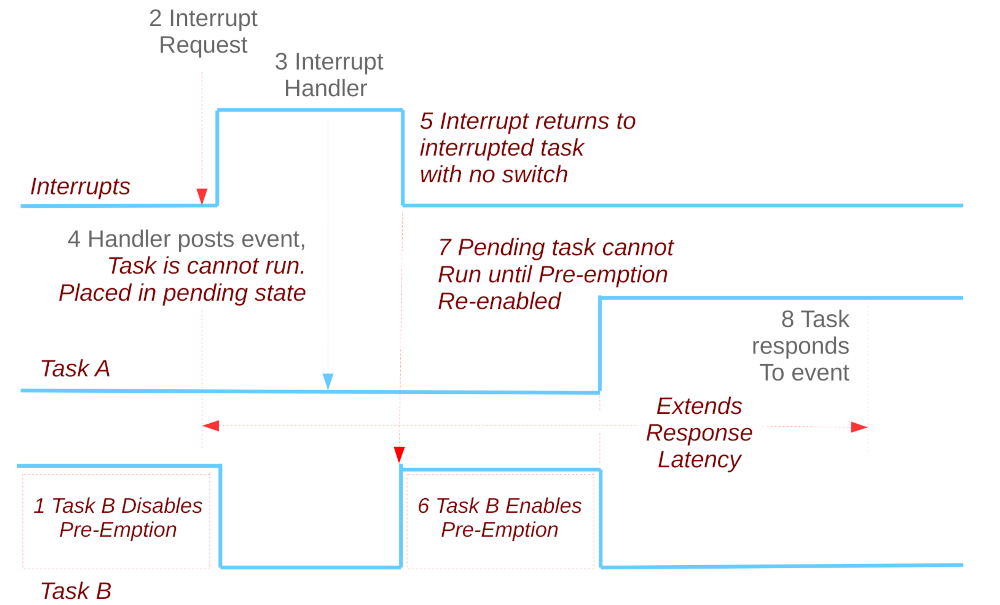Effects of Disabling Interrupts or Pre-Emption on Response Latency
Rate Monotonic Scheduling
Assumption
No resource sharing (processes do not share resources, e.g. a hardware resource, a queue, or any kind of semaphore blocking or non-blocking (busy-waits)).
Wikipedia “Rate Monotonic Scheduling”
Real world
We must protect shared resources with locks of some kind. The most aggressive:
Disabling interrupts, and
Disabling pre-emption.
What are the effects of real-time performance when this assumptions is violated?
Normal Interrupt Processing

Effect of Disabling Interrupts

Effect of Disabling Pre-emption
